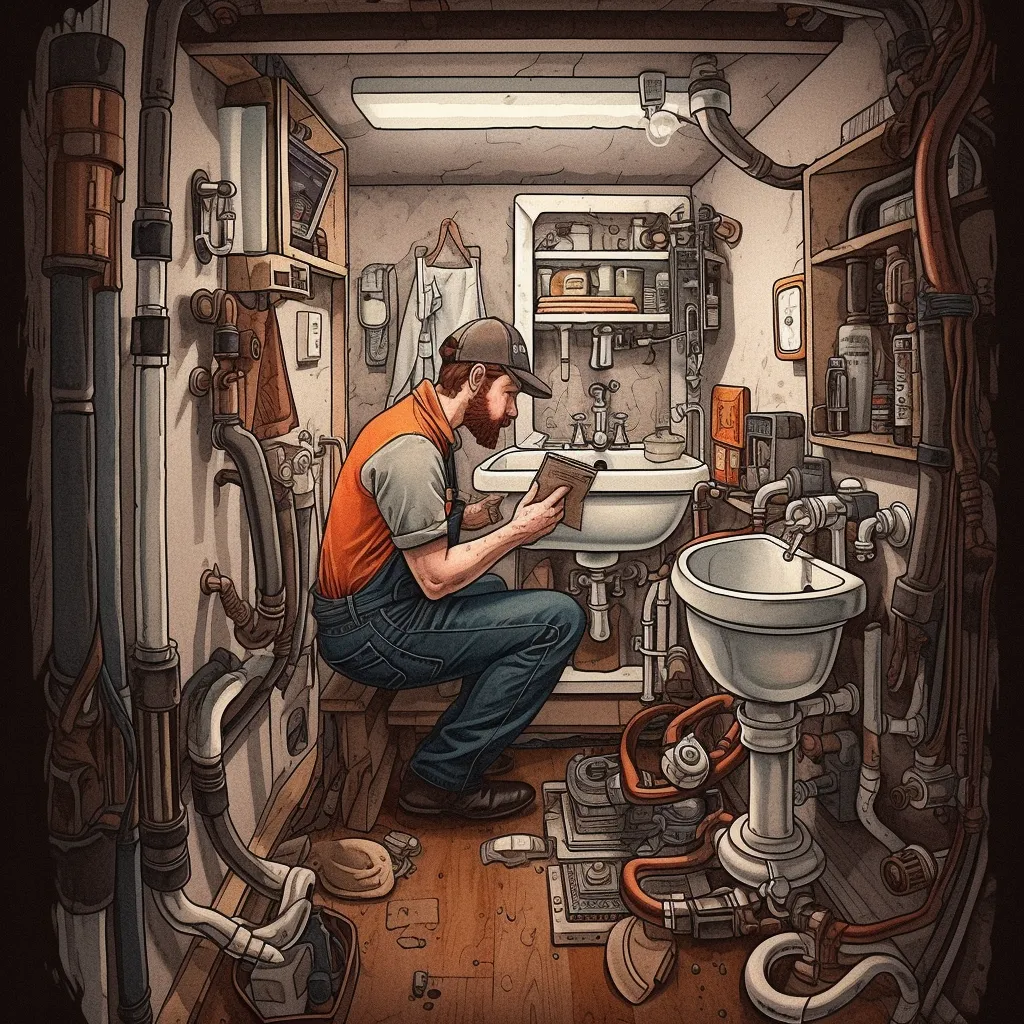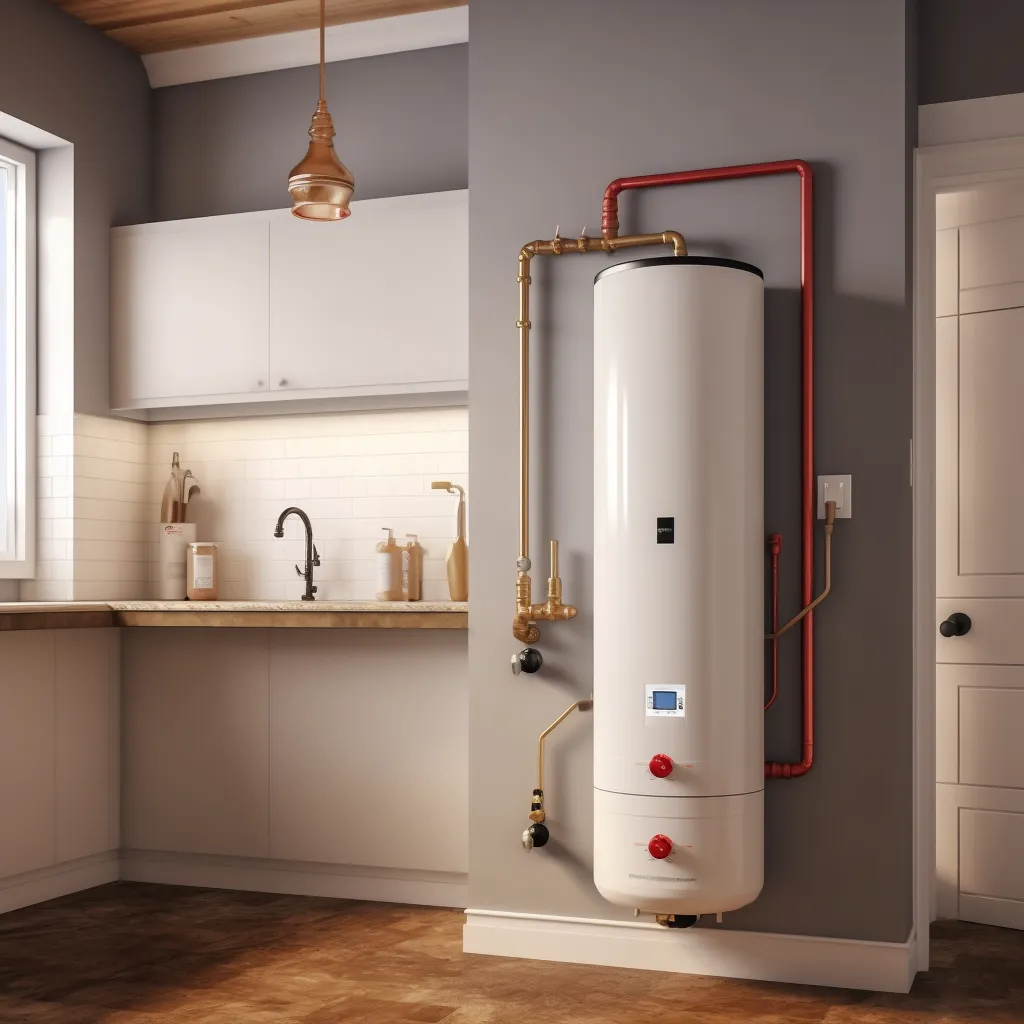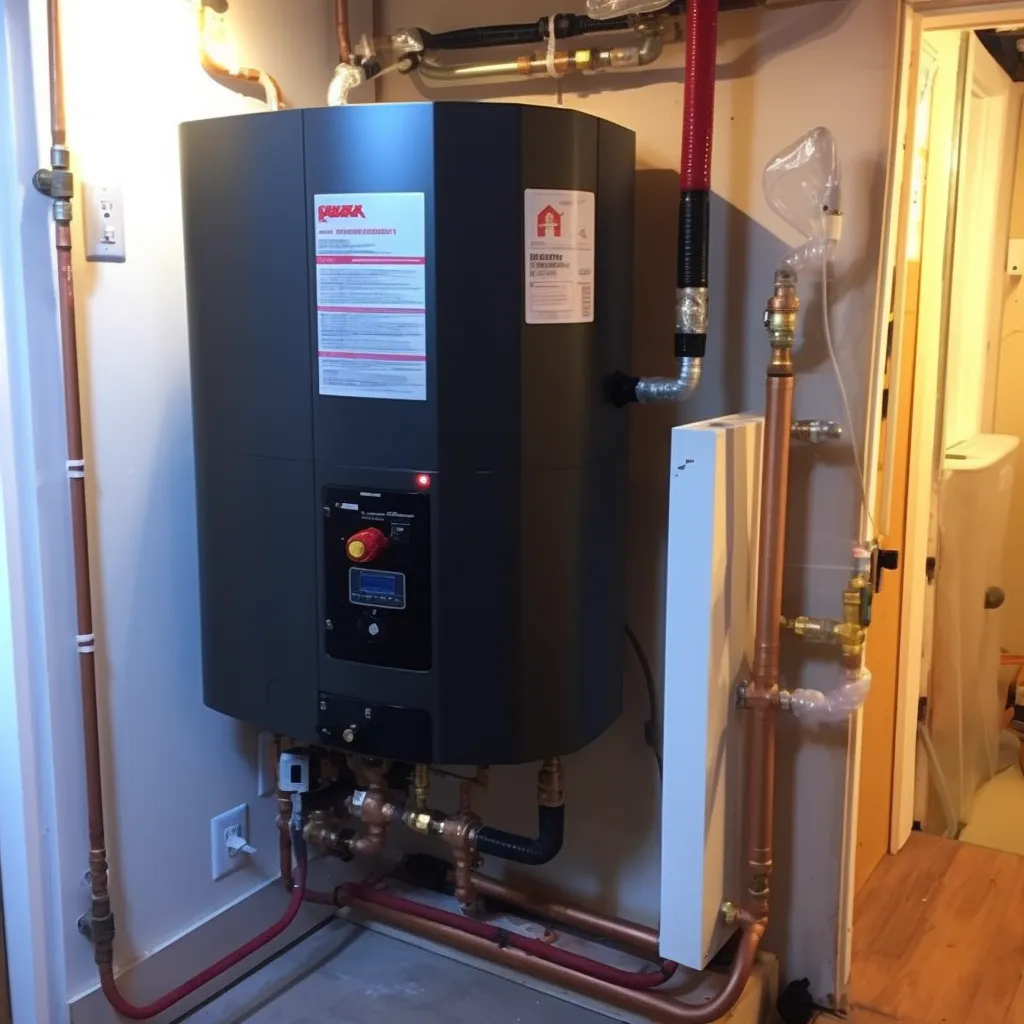Essential Plumbing Maintenance Tips For Seaside Home: A Complete Guide
Living by the ocean presents unique challenges for your home's plumbing system. The salty air, high humidity, and coastal weather patterns can accelerate wear and tear on pipes, fixtures, and appliances. In Seaside, California, where the marine environment meets residential infrastructure, homeowners face distinct maintenance challenges that require specialized attention and expertise.
The combination of salt-laden air, fluctuating temperatures, and coastal storms can reduce the lifespan of plumbing components by up to 50% compared to inland homes. Metal pipes and fixtures are particularly vulnerable to corrosion, while drainage systems must contend with sandy soil conditions and potential saltwater intrusion. Understanding and addressing these challenges through proper maintenance is crucial for protecting your investment and ensuring your plumbing system's longevity.
This comprehensive guide will help you navigate the specific demands of coastal plumbing maintenance, offering practical solutions and preventive measures tailored to the unique conditions of seaside living. Whether you're a new coastal homeowner or a long-time resident of Seaside, these maintenance tips will help you protect your plumbing system against the harsh marine environment and avoid costly repairs down the line.

Understanding The Impact Of Coastal Living On Your Plumbing
Coastal environments create specific challenges for plumbing systems that inland homeowners rarely encounter. The combination of environmental factors in Seaside, CA creates a perfect storm of conditions that can significantly impact your plumbing system's integrity and longevity.
Salt Air Corrosion
Salt-laden air is perhaps the most destructive element facing coastal plumbing systems. According to the National Association of Corrosion Engineers (NACE International - www.nace.org/corrosion-basics/), when salt particles settle on metal surfaces, they create an electrochemical reaction that accelerates corrosion. This process affects everything from copper pipes to brass fixtures, potentially reducing their lifespan by 40-60% compared to inland installations. Even stainless steel components, despite their resistance, can develop corrosion spots in highly exposed areas.
Humidity-Related Issues
The consistently high humidity levels in coastal areas create persistent moisture problems. Condensation forms more readily on cold water pipes, leading to:
1. Accelerated corrosion in metal components.
2. Mold and mildew growth in enclosed spaces.
3. Premature deterioration of pipe insulation.
4. Increased stress on pipe joints and connections.
Soil Conditions and Ground Movement
Coastal properties often sit on sandy or unstable soil, which presents unique challenges:
1. Shifting ground can stress and potentially crack underground pipes.
2. Sandy soil can erode around pipes, leaving them unsupported.
3. Salt in groundwater can corrode underground plumbing components.
4. Tidal influences can affect sewage system performance.
Temperature Fluctuations
While Seaside enjoys a relatively mild climate, daily temperature variations can still impact plumbing systems:
1. Thermal expansion and contraction of pipes.
2. Increased stress on pipe joints and connections.
3. Accelerated deterioration of rubber seals and gaskets.
4. Potential condensation issues during temperature swings.


Water Quality Considerations
Coastal water supplies often face unique challenges:
1. Higher mineral content due to proximity to seawater.
2. Increased sediment levels in water systems.
3. Potential saltwater intrusion in groundwater.
4. Variable water pressure due to municipal system demands.
Storm and Weather Impact
Coastal weather patterns create additional stress on plumbing systems:
1. Storm surge risks to lower-level plumbing fixtures.
2. Wind-driven rain penetration around pipe penetrations.
3. Pressure fluctuations during severe weather events.
4. Increased risk of power outages affecting pump systems.
Material Degradation
Different plumbing materials react differently to coastal conditions:
1. Copper pipes may develop pinhole leaks from salt exposure.
2. Galvanized steel pipes corrode more quickly in marine environments.
3. PVC and other plastics may degrade faster from UV exposure.
4. Fixture finishes wear more quickly from salt air exposure.
Air Quality Effects
The combination of salt air and industrial pollutants near coastal areas can:
1. Create more acidic condensation on pipes.
2. Accelerate the breakdown of protective coatings.
3. Increase the rate of metal oxidation.
4. Affect the performance of ventilation systems.
Understanding these impacts is crucial for developing an effective maintenance strategy for your coastal home's plumbing system. Regular monitoring and preventive maintenance can help mitigate these effects and extend the life of your plumbing components.


Why Regular Inspections And Preventive Maintenance Are Crucial
Establishing a routine maintenance schedule is essential for coastal properties. Without preventive care, the accelerated wear caused by
marine conditions can lead to system failures and costly emergency repairs.
Studies show that regular maintenance can extend plumbing system lifespan by up to 30% in coastal environments and reduce emergency repair costs by 40%.
Essential Monthly Inspections
Conduct thorough monthly inspections focusing on:
Exposed Pipe Assessment: Check all visible pipes for signs of corrosion, particularly in crawl spaces and outdoor areas. Look for green or white deposits on copper pipes indicating salt-air corrosion.
Joint Monitoring: Examine pipe joints and fixture connections for moisture, as these areas are most susceptible to failure.
Fixture Performance: Test all faucets, showers, and toilets for proper water pressure and drainage.
Water Heater Evaluation: Inspect for rust spots, leaks, and unusual sounds.
Outdoor Component Check: Examine exterior fixtures for salt buildup and damage.
Seasonal Maintenance Tasks
Spring
1. Clean and inspect gutters and downspouts.
2. Test sump pumps before rainy season.
3. Check outdoor shower and sprinkler systems.
4. Inspect foundation for water accumulation.
Summer
1. Clean and maintain pool equipment plumbing.
2. Service water treatment systems.
3. Check irrigation system components.
4. Test water pressure throughout home.
Fall
1. Prepare plumbing for storm season.
2. Insulate exposed pipes.
3. Clean and cover outdoor fixtures.
4. Schedule professional inspection.
Winter
1. Monitor heating system impact on plumbing. 2. Check for frozen pipe risks.
3. Maintain proper indoor humidity.
4. Test emergency shut-off procedures.

Establish A Professional Maintenance Schedule
Partner with a qualified plumber in Seaside for:
1. Bi-annual comprehensive system inspections.
2. Professional pipe cleaning and descaling.
3. Water quality testing and treatment.
4. Preventive component replacement.
5. Video inspection of sewer lines.
6. Backflow prevention testing.
Documentation and Monitoring
Maintain detailed records of:
1. Inspection dates and findings.
2. Repair history and costs.
3. Water quality test results.
4. Component replacement dates.
5. Warranty information.
6. Professional service reports.
Cost-Benefit Analysis
Preventive maintenance provides significant financial benefits:
1. 70% reduction in emergency repair frequency.
2. 25-35% lower annual plumbing costs.
3. Extended system lifespan of 10-15 years.
4. Improved home resale value.
5. Lower water and energy bills.
6. Reduced insurance claims.

Early Warning Signs Of Plumbing Issues
Learn to recognize issues requiring immediate attention:
1. Unusual sounds in pipes.
2. Changes in water pressure.
3. Slow drainage patterns.
4. Water discoloration.
5. Unexplained moisture Increasing utility bills.
Key Areas to Monitor:
1. Exterior hose bibs and outdoor showers.
2. Under-sink connections.
3. Water heater fittings.
4. Main water line entry points.
5. Vent stacks on the roof.

Ways To Protect Against Salt Water Corrosion
Salt air corrosion is a primary concern for coastal homeowners. Install sacrificial anodes on water heaters and other susceptible
equipment to protect against galvanic corrosion. Consider applying marine-grade protective coatings to exposed metal pipes and fixtures. Use corrosion-resistant materials like PVC or copper-nickel alloys when replacing plumbing components.
Protective Measures:
1. Regular cleaning of exposed metal surfaces.
2. Application of rust inhibitors.
3. Installation of water softeners to reduce mineral buildup.
4. Use of marine-grade protective sprays on outdoor fixtures.

How To Manage Water Quality In Seaside Home
Coastal areas often experience unique water quality challenges. Install whole-house water filtration systems to remove salt, minerals, and sediment. Test water quality quarterly to monitor salt content and pH levels. Consider installing a water softener to prevent scale buildup in
pipes and appliances.
Water Treatment Solutions:
1. Reverse osmosis systems.
2. UV purification.
3. Carbon filtration.
4. Water softening equipment.
Drain and Sewer Line Care
Sandy soil and shifting ground common in coastal areas can affect sewer line integrity. Schedule annual video inspections of main sewer
lines to detect potential issues early. Install backwater valves to prevent seawater intrusion during storm surges. Keep drains clear of sand and debris that can accumulate more quickly in coastal environments.
Maintenance Tips:
1. Monthly drain cleaning with enzymatic cleaners.
2. Installation of drain screens to catch sand and debris.
3. Regular inspection of outdoor clean-outs.
4. Prompt repair of any pipe settlement issues.

Storm Preparation And Weather Protection
Coastal storms require specific plumbing preparations.
1. Install flood prevention devices on lower-level fixtures.
2. Know the location of your main water shut-off valve and test it regularly.
3. Consider installing a sump pump system with battery backup for flood protection.
Storm Readiness Checklist:
1. Inspect and secure outdoor plumbing fixtures.
2. Clear gutters and downspouts.
3. Test sump pumps and backup systems.
4. Insulate exposed pipes against freezing.
5. Verify backwater valve operation.
Water Heater Maintenance in Coastal Environments
1. Water heaters in coastal homes require extra attention due
to accelerated corrosion risks.
2. Flush water heaters quarterly to remove sediment buildup.
3. Check anode rods annually and replace when necessary.
4. Consider installing a tankless water heater to reduce corrosion risks.
1. Regular temperature and pressure relief valve testing.
2. Inspection of connection points for corrosion.
3. Monitoring of unusual sounds or performance changes.
4. Professional maintenance twice yearly.
Appliance Protection and Maintenance
1. Coastal humidity can affect plumbing-connected appliances.
2. Install humidity monitors in areas with major appliances.
3. Use dehumidifiers to control moisture levels.
4. Regularly inspect appliance connections and hoses for signs of wear.
Appliance Considerations:
1. Washing machine hose replacement every 3-5 years.
2. Dishwasher connection inspection quarterly.
3. Ice maker filter replacement on schedule.
4. Regular cleaning of appliance filters and screens.


Consider A Professional Maintenance Partnership
While many maintenance tasks can be handled by homeowners,
professional expertise is essential for coastal properties. Schedule
semi-annual professional inspections to catch potential issues early. Develop a relationship with a licensed plumber familiar with coastal plumbing challenges.
When to Call a Professional:
1. Annual comprehensive plumbing inspections.
2. Installation of new protective systems.
3. Complex repairs involving main lines.
4. Water quality testing and treatment.

Contact Family Home Plumbing Services Today!
Don't wait for plumbing problems to escalate in your coastal
home. Family Home Plumbing Services of Seaside, CA specializes in protecting and maintaining plumbing systems in marine environments.
Contact our experienced team today to schedule a comprehensive plumbing inspection and develop a customized maintenance plan for your seaside home. Our technicians understand the unique challenges of coastal living and can help protect your
plumbing investment for years to come.
Frequently Asked Questions About Plumbing Maintenance
Q: How often should I have my plumbing inspected in a coastal home?
A: Professional plumbing inspections should be conducted semi-annually in coastal homes due to the accelerated wear from salt air
exposure and marine conditions.
Q: What are signs of salt air corrosion in plumbing?
A: Look for green or white deposits on copper pipes, pitting or flaking on metal surfaces, and rusty discoloration around joints and fixtures.
Q: Do I need special water treatment in a coastal home?
A: Yes, coastal homes often benefit from whole-house filtration systems and water softeners to address higher mineral content and potential saltwater intrusion.
Q: How can I protect outdoor plumbing fixtures in a coastal environment?
A: Use marine-grade protective coatings, install covers on exposed fixtures, and regularly clean and maintain outdoor plumbing components to prevent salt air damage.
Q: What should I do to prepare my plumbing for coastal storms?
A: Install backwater valves, maintain sump pumps, know your main water shut-off location, and consider flood prevention devices for lower-level fixtures.
Q: How often should water heaters be maintained in coastal areas?
A: Flush water heaters quarterly and inspect anode rods annually. Professional maintenance should be performed twice yearly due to
accelerated corrosion risks.
Q: Why do coastal homes need more frequent plumbing maintenance?
A: Salt air, high humidity, and coastal weather patterns accelerate corrosion and wear on plumbing systems, requiring more frequent inspection and maintenance.
Q: What type of pipes are best for coastal homes?
A: Corrosion-resistant materials like PVC, CPVC, or copper-nickel alloys are recommended for coastal installations..
Q: How can I prevent sand from clogging my drains?
A: Install drain screens, regularly clean drains with enzymatic cleaners, and consider installing sand traps in outdoor shower areas.
Contact Us
GET IN FULL TOUCH
PHONE: (831) 604-3132
EMAIL:
Gregory@waterheaterseaside.com
Family Home Plumbing Services
Seaside, CA 93955
